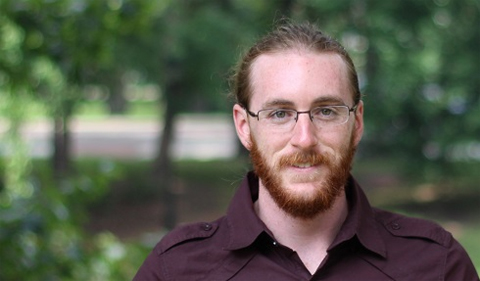The Geological Sciences Colloquium Series presents Peter Jahl and Jack Seeley, Geological Sciences graduate students discussing their research on Oct. 27 at 4:10 p.m. in Clippinger 205.

Peter Jahl
Jahl presents “Modifying and Producing Exoplanet Interior Models for Local Stellar Systems”
Abstract: Recent interest in the discovery of Earth-like exoplanets has sparked studies on the detection and characterization of these exoplanets. This study applies NASA’s current KEPLER mission criteria for an Earth-like planet and aims to realistically describe the interior of such planets. Self-compression models of exoplanetary interiors are created with varying conditions, including mineralogical composition and temperature profiles, in order to determine properties such as surface gravity, moment of inertia, and total radius. Trends relating a planet’s core-mass fraction to total radius and Mg/Si ratio to total radius have been found and will be improved upon with the recent addition of a new mineralogical model and a high-pressure phase mineral layer.

Jack Seeley
Seeley presents “Optical and X-Ray Diffraction Analysis of Shock Metamorphosed Knox Group Dolostone from Wells Creek Crater, TN (Part II)”
Abstract: This study is an effort to characterize the crystallographic effect of shock metamorphism in dolomite via 18 thin sections and 18 powder X-Ray diffraction (XRD) samples from an 800 m core extending through the Knox Group dolostone megabreccia of the central uplift of Wells Creek Crater. These samples are being analyzed petrographically for twinning, fracture density, crystal size, and texture. Further analysis includes X-Ray fluorescence and powder XRD, with refinement of diffraction patterns via the Rietveld method forthcoming. The refined Full-Width Half-Maximum vs. º2θ curves will then be analyzed, and in conjunction with the other analyses will be used to determine how shock metamorphic effects vary with depth. Shock metamorphic textures are expected to be better developed and thus representative of higher peak shock pressures towards to top of the core, closer to the impact.
Upcoming Colloquia
Joshua Miller of the University of Cincinnati on “Tracking ecological change through the Anthropocene and beyond: Insights for paleoecology and conservation biology from bones on the landscape” on Nov. 3 at 4:10 pm in Clippinger 205.
Michal Kowalewski of the University of Florida on “Tales Told by Dead Shells: Paleobiological Approaches to Historical Ecology and Conservation” on Nov. 8 at 2:00 pm in Walter Hall 235.
Kenneth Brown of West Virginia University on “Crystals as archives into Igneous systems and processes: exploring potassium feldspar megacrysts in granites and granodiorites” on Nov. 17 at 4:10 pm in Clippinger 205.
Lindsey Schafer on “Statistical analysis of mining parameters to create empirical models to predict mine pool formation in underground coal mines” and Fred Twumasi on “Modeling of hydrological data to predict mine pool formation and possible discharge locations in underground mines” on Dec. 1 at 4:10 pm in Clippinger 205. Both are Geological Sciences graduate students.



















Comments